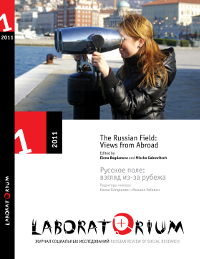Russian State and Civil Society in Interaction: An Ethnographic Approach
Main Article Content
Abstract
Interaction between civil society organizations and the state in Russia is analyzed on the basis of fieldwork in the Sortavala district in Karelia. The liberal and statist models wrongly assume that civil society and the state are distinct and opposing entities; this study shows that in practice they overlap and intersect. The often-made distinction between policy-advocacy and service-provision organizations is overly reductionist, since one organization can perform both functions. The cases discussed are a Municipal Social Service Center that bundles public and civic efforts; an independent child protection organization that actively collaborates with the authorities; and a network of women’s organizations that has successfully proposed regional policy initiatives. The article presents a case for studying state-civil society relations in Russia ethnographically and at the local and regional level.
Keywords
Abstract 170 | PDF Full Paper Downloads 107 PDF Extended Summary (Русский) Downloads 215 HTML Full Paper Downloads 91 HTML Extended Summary (Русский) Downloads 11

